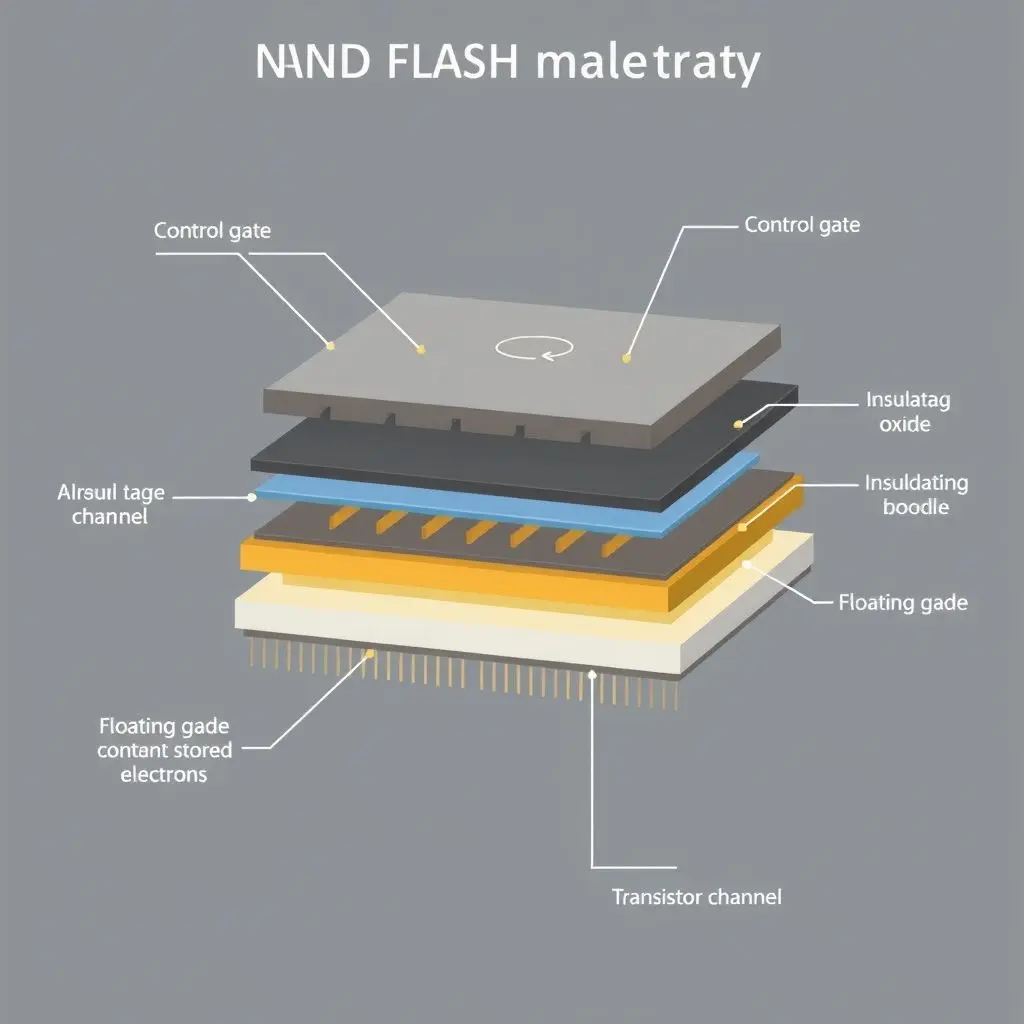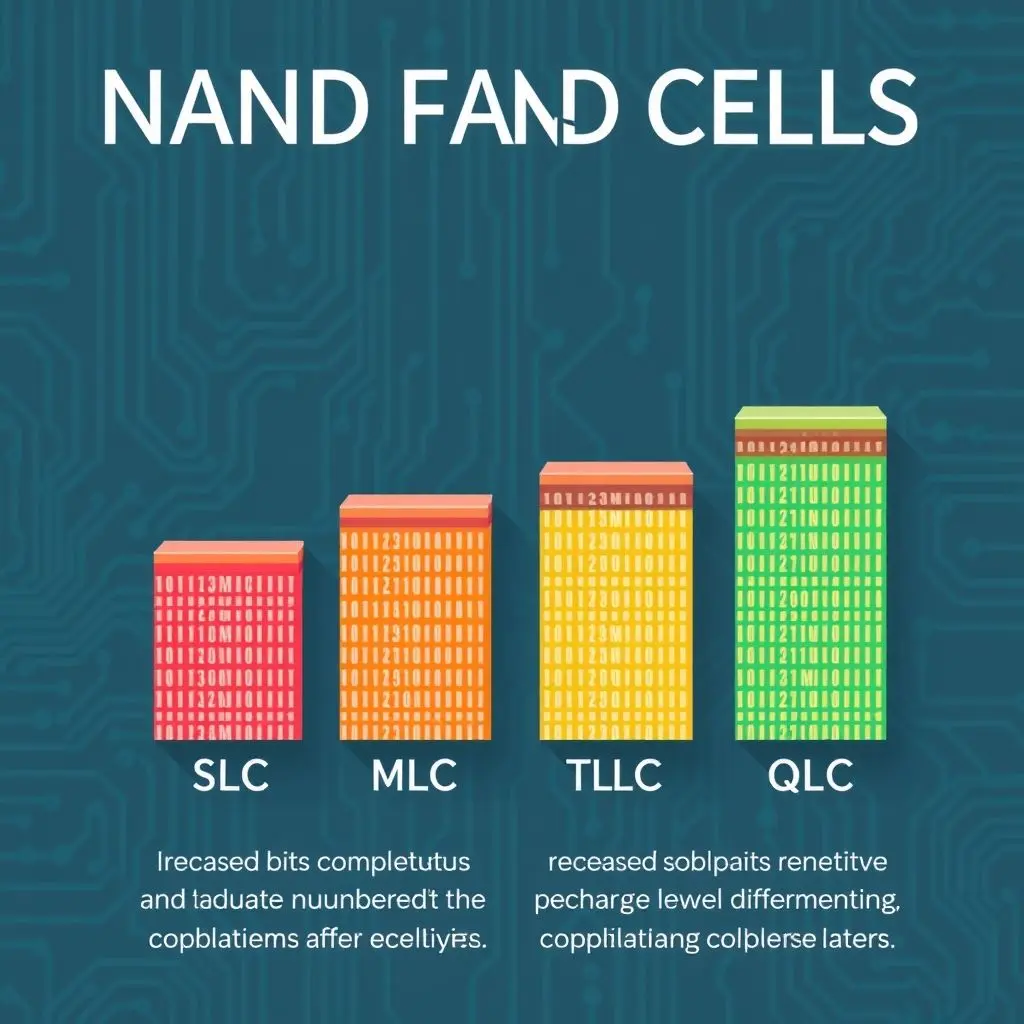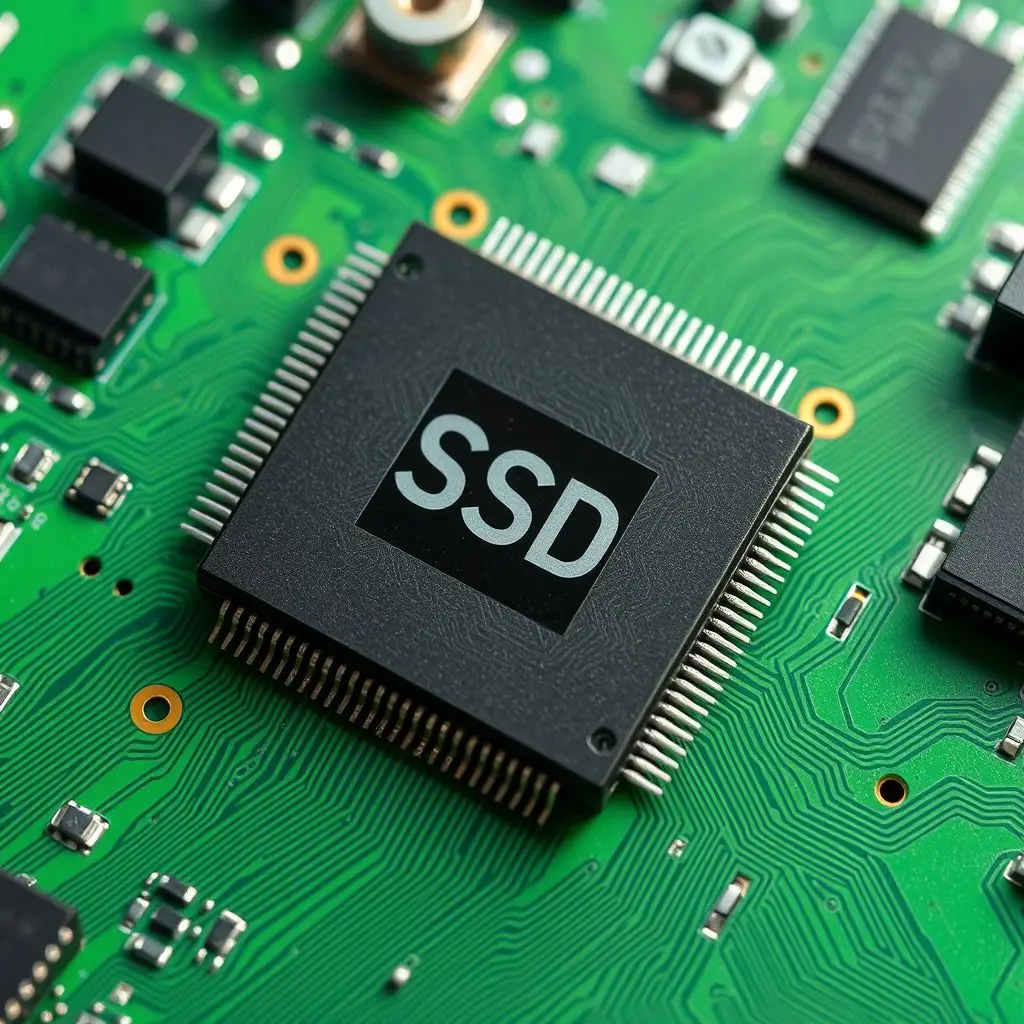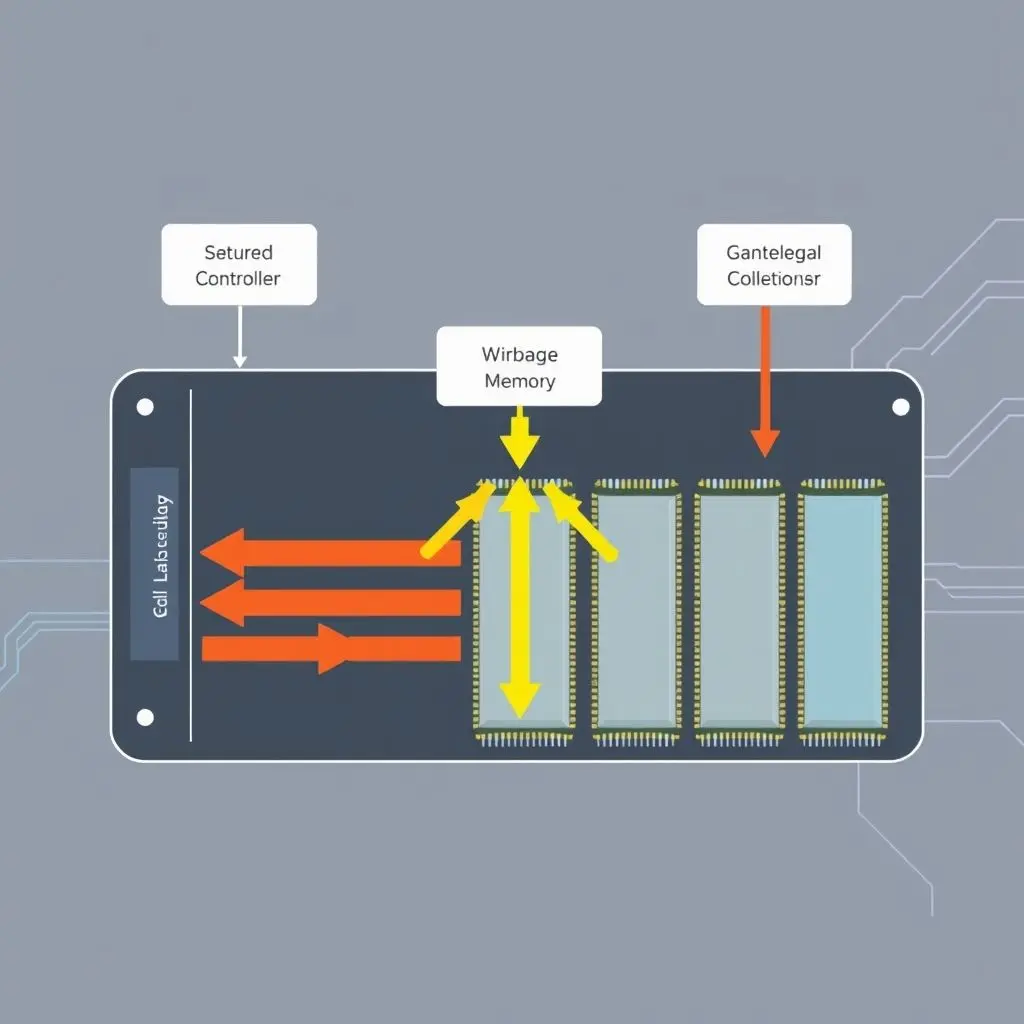In the age of lightning-fast computing, Solid State Drives (SSDs) have revolutionized how we access and store information. They boot up your operating system in seconds, load games almost instantly, and make transferring large files feel like a breeze. But here’s the mind-bending question: how do these drives, with absolutely zero spinning parts, actually hold onto your precious data?
Unlike the clunky, whirring mechanical hard drives of yesteryear that relied on spinning platters and moving read/write heads, SSDs are a marvel of pure electronic ingenuity. There are no disks to spin, no arms to swing. So, where do your files live? It’s essentially a world of incredibly tiny electrical gates that have the magical ability to either trap or release an electric charge. This presence or absence of charge is the fundamental way an SSD represents the ones and zeros that make up all your digital life.
Imagine millions upon millions of miniature, non-erasable light switches. When the switch is “on,” it holds a charge (a “1”). When it’s “off,” it doesn’t (a “0”). The remarkable part? These switches remember their state even when the power is completely off. Your spreadsheets, photos, videos, and operating system aren’t physically etched or magnetically recorded; they exist as intricate patterns of trapped or released electrons within semiconductor chips.
Want a quick visual overview of this solid-state marvel? Check out our short video explaining the core concept:
Now, let’s dive deeper into the electronic wizardry that makes this possible.
Table of Contents
The Heart of the SSD: NAND Flash Memory
The core technology powering SSDs is called NAND flash memory. This isn’t like the volatile RAM in your computer that forgets everything when the power is cut. NAND flash is a type of non-volatile memory, meaning it retains data even without electricity.
At the fundamental level, NAND flash is built using billions of tiny components called floating-gate transistors, also known as NAND gates or cells. Think of each cell as a single bit storage unit, at least initially. Unlike a standard transistor that just controls current flow, a floating-gate transistor has an extra gate – the “floating gate” – sandwiched between two insulating layers. This floating gate is the key to storing data.
How a Single Cell Stores a Bit
Here’s the basic idea for storing just one bit (a 0 or a 1) in a cell:
- Writing a “0” (or Programmed State): To store a “0,” a voltage is applied to the transistor’s “control gate.” This high voltage creates an electric field strong enough to force electrons across the insulating layer and trap them on the floating gate. Once trapped, these electrons remain there, even when the voltage is removed. The presence of these trapped electrons alters the electrical properties of the transistor, making it harder for current to flow through the main channel when read.
- Writing a “1” (or Erased State): To store a “1,” the floating gate is essentially cleared of electrons. This is done by applying a voltage in the opposite direction, pulling the electrons off the floating gate and back across the insulating layer. With no trapped electrons, the transistor behaves differently, allowing current to flow more easily when read.
Reading the Data
To read the stored bit, a lower voltage is applied to the control gate, and the controller attempts to pass a small current through the transistor’s main channel. The amount of current that flows is measured. If electrons are trapped on the floating gate (representing a “0”), the current flow will be significantly impeded compared to a cell where electrons are absent (representing a “1”). The controller senses this difference in conductivity and determines whether the cell holds a 0 or a 1.

More Bits Per Cell: MLC, TLC, and QLC
Early SSDs used Single-Level Cell (SLC) NAND, storing just one bit (0 or 1) per cell as described above. This was fast and durable but very expensive.
To increase storage density and lower costs, manufacturers developed techniques to store multiple bits per cell by sensing multiple levels of charge. This is done by precisely controlling the number of electrons trapped on the floating gate, creating distinct charge thresholds.
- Multi-Level Cell (MLC): Stores 2 bits per cell. This requires distinguishing between four different charge levels (00, 01, 10, 11).
- Triple-Level Cell (TLC): Stores 3 bits per cell. This requires distinguishing between eight different charge levels (000 to 111).
- Quad-Level Cell (QLC): Stores 4 bits per cell. This requires distinguishing between sixteen different charge levels (0000 to 1111).
Storing more bits per cell is great for capacity and price, but it comes with trade-offs. With more charge levels packed into the same voltage range, the difference between levels is smaller. This makes them harder to distinguish accurately (requiring more sophisticated controllers and error correction), slower to write (as charge must be precisely controlled), and less durable (the insulation wears down faster with more program/erase cycles). SLC remains the fastest and most durable, while QLC offers the highest capacity at the lowest cost per gigabyte.

Organizing the Data: Pages and Blocks
NAND flash cells aren’t addressed individually. They are organized into larger units:
- Pages: A page is a contiguous group of cells, typically between 4KB and 16KB in size. Data is written (programmed) to pages.
- Blocks: A block is a collection of pages, usually containing 128 to 256 pages (512KB to 4MB). This is the smallest unit that can be erased. You cannot overwrite a page; you must erase an entire block before writing new data to any of its pages.
This block-based erase limitation is crucial to understanding SSD operation and why specific management tasks are necessary.
The Brains of the Operation: The SSD Controller
While the NAND flash chips store the data, they can’t manage themselves. This is where the SSD controller comes in. This sophisticated processor is the intelligent orchestrator of everything happening on the drive. It handles communication with the computer, manages data storage, retrieval, and ensures the drive operates efficiently and reliably.

Key functions of the SSD controller include:
- Flash Translation Layer (FTL): This is arguably the controller’s most important job. The FTL acts as a logical-to-physical address map. When your operating system asks to write data to a specific logical block address (LBA), the FTL translates this into the actual physical location (page and block) on the NAND chips where the data will be stored. When you later request that data, the FTL finds its physical location and retrieves it. This layer is essential because data doesn’t stay in one physical place over time due to wear leveling and garbage collection.
- Wear Leveling: Flash memory cells have a limited number of program/erase cycles before they degrade and fail. To prevent specific blocks from wearing out prematurely while others remain unused, the controller employs wear leveling algorithms. It distributes writes as evenly as possible across all the NAND blocks on the drive over its lifetime, maximizing the drive’s lifespan.
- Garbage Collection (GC): When you delete a file or modify one, the old data isn’t immediately erased from the SSD. Instead, the pages containing that data are marked as ‘invalid’ by the FTL. To reclaim space for new writes, the controller performs garbage collection. This process involves finding blocks with a mix of valid and invalid pages, reading the valid pages and writing them to a new, empty block, and then erasing the old block containing the invalid pages. This background process helps maintain performance over time, especially when the drive starts filling up.
- Error Correction Code (ECC): As NAND cells store more bits and undergo wear, the likelihood of minor read errors increases (e.g., misinterpreting a charge level). The controller uses sophisticated ECC algorithms to detect and correct most single-bit errors and even some multi-bit errors, ensuring data integrity.
- Bad Block Management: As blocks eventually wear out and fail, the controller identifies them and maps them out, preventing any further data from being written to or read from those faulty locations.
Writing Data: A Multi-Step Process
Compared to reading, writing data to an SSD is more complex and time-consuming because of the block-based erase restriction and the need for background management tasks:
- The controller receives a write request from the OS for specific data.
- The controller finds an empty page within a block to write the new data.
- The data is written (programmed) to that specific page by injecting electrons into the floating gates of the relevant cells.
- If the write request modifies existing data, the old pages containing that data are marked as invalid by the FTL. The old physical location is no longer used, and the FTL updates its map to point the logical address to the new physical location.
- In the background, the controller performs garbage collection to free up blocks with invalid data. This might involve reading valid data from a partially-used block, writing it to a new block, and then erasing the old block entirely so it can be reused.
This is why writing performance can sometimes fluctuate or decrease, especially on a heavily used or nearly full drive, as the controller constantly juggles writing new data with background cleanup and wear leveling.

Reading Data: Simple and Fast
Reading data is much simpler and faster. The controller receives a read request, consults its FTL map to find the physical page(s) where the requested data resides, and then quickly senses the charge levels in the cells of those pages to reconstruct the original data bits. Since it’s just sensing charge and not manipulating it significantly, reading is considerably faster than writing.
Why This Technology Matters
Understanding how SSDs store data reveals why they offer such significant advantages over traditional hard drives:
- Speed: No moving parts means near-instantaneous access to any data location, unlike the physical head movement required by HDDs. This electronic access is dramatically faster.
- Durability: With no sensitive mechanical components, SSDs are far more resistant to shocks and vibrations.
- Power Efficiency: Less energy is required to move electrons than to spin platters and move heads.
- Size and Form Factor: The compact nature of flash chips allows for much smaller drives, enabling thinner laptops and devices.
Frequently Asked Questions About SSD Data Storage
Do SSDs lose data if they aren’t powered on for a long time?
Generally, no, not under typical conditions. NAND flash is non-volatile and retains data for many years without power. However, extreme temperatures or very prolonged periods (think decades, often beyond the useful life of the device) can potentially affect charge retention, particularly in older or heavily worn out drives. For typical consumer use, data retention without power is not a concern.
Do SSDs ‘wear out’ from writing data?
Yes, NAND cells have a finite number of program/erase cycles they can endure before they degrade. However, modern SSDs, thanks to advanced wear leveling and controllers, are designed to last for many years of typical usage. Manufacturers provide a Terabytes Written (TBW) rating, indicating how much data can be written to the drive before its warranty expires or it reaches its expected end of life. For most users, this limit is far beyond what they will write during the lifespan of their computer.
Is there a difference between the “endurance” of different SSD types (SLC, MLC, TLC, QLC)?
Absolutely. SLC is the most durable because it stores only one bit per cell, requiring fewer, less precise voltage changes. MLC, TLC, and QLC store more bits by using more distinct charge levels, which puts more stress on the insulating layers during program/erase cycles. Therefore, SLC has the highest endurance, followed by MLC, TLC, and then QLC having the lowest endurance rating among them.
Why does SSD performance sometimes slow down when the drive is full?
When an SSD is nearly full, the controller has fewer empty blocks available to perform garbage collection efficiently. It has to work harder to find space, move valid data, and erase blocks, which can increase write amplification and slow down performance compared to a drive with more free space.
A Solid-State Leap Forward
The transition from mechanical spinning disks to solid-state electronics fundamentally changed data storage. It’s a testament to the power of semiconductor physics and sophisticated controller algorithms that billions of tiny electron traps can reliably store and retrieve the vast amounts of data we rely on every day. The next time you experience the speed of an SSD, you’ll know it’s not just magic; it’s the intricate dance of electrons choreographed by a tiny, powerful chip.





